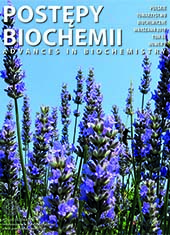Characterization of the proteins involved in the transport and storage of iron in plants
Abstract
Iron is a transient metal essential for the proper growth and development of plants because as a component of the enzymes with a wide redox potential, iron contributes to the key cellular processes. During evolution, plants have developed a wide range of molecular mechanisms for the efficient control of iron homeostasis within their cells, tissues and organs. These include membrane proteins involved in the uptake, long-distance transport and intracellular distribution of iron as well as the iron-storing and iron-chelating proteins, that are involved in the protection of the plant cells from iron excess and/or ensure the proper growth and development of plants under Fe deficiency. Since iron is crucial for the functioning of plants, the proteins involved in the transport, chelation and storage of iron within plant cells are currently thoroughly studied. This work presents the current state of the art in the knowledge of these proteins and their regulatory mechanisms.
Downloads
Published
Issue
Section
License
All journal contents are distributed under the Creative Commons Attribution-ShareAlike 4.0 International (CC BY-SA 4.0) license. Everybody may use the content following terms: Attribution — You must give appropriate credit, provide a link to the license, and indicate if changes were made, ShareAlike — If you remix, transform, or build upon the material, you must distribute your contributions under the same license as the original. There are no additional restrictions — You may not apply legal terms or technological measures that legally restrict others from doing anything the license permits.
Copyright for all published papers © stays with the authors.
Copyright for the journal: © Polish Biochemical Society.




